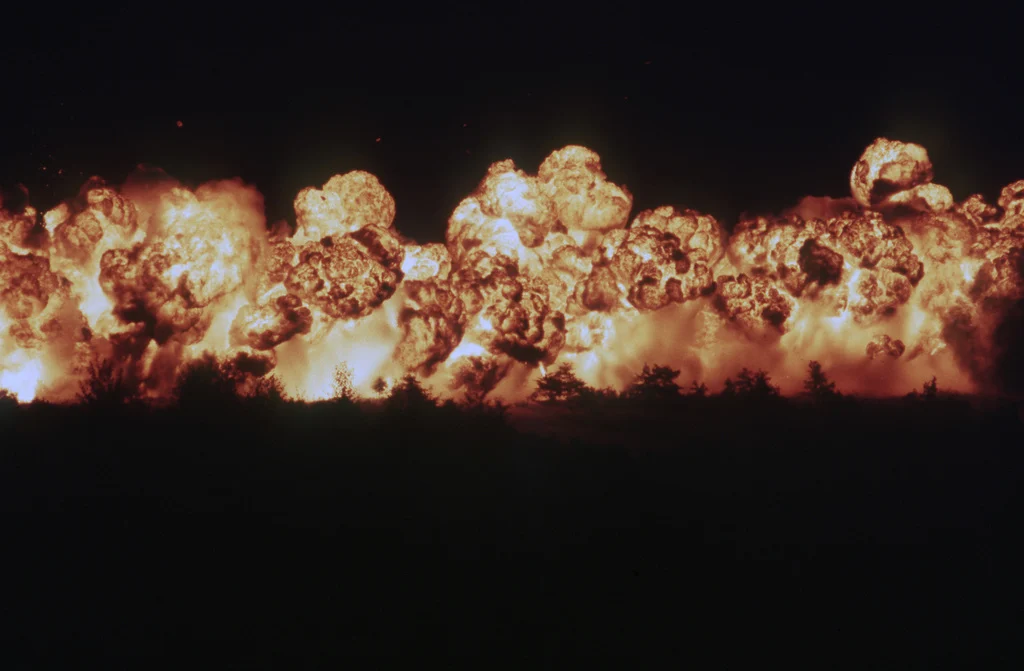In a meticulously planned and audacious operation, Israel launched a large-scale military strike against strategic infrastructure deep within Iran, and assassinating the top three Islamic Revolutionary Guard Corps (IRGC) military leaders, including Hossein Salami, Ali Shamkhani and Mohammad Bagheri, dealing a significant blow to the Islamic Republic’s military and nuclear ambitions. Codenamed “Rising Lion,” the operation was the culmination of years of preparation, involving seamless coordination between the Israel Defense Forces (IDF), the Mossad, and Israel’s cutting-edge defense industries. The strike, executed with unprecedented precision, targeted Iran’s air defense systems, missile arrays, and key strategic nuclear and missile sites, sending a resounding message: Israel will not tolerate threats to its security, particularly from Iran’s pursuit of weapons of mass destruction.
A Multi-Layered Operation Years in the Making
The operation, described by a senior Israeli security source as requiring “bold and sophisticated planning, groundbreaking strategic thinking, and intricate deception,” was years in the making. It combined advanced intelligence-gathering, covert sabotage, and precision military strikes to neutralize Iran’s ability to threaten Israel with ballistic missiles or nuclear capabilities. The IDF and Mossad worked closely to compile detailed intelligence on senior Iranian defense officials and nuclear scientists, enabling targeted assassinations that disrupted Tehran’s military leadership. Simultaneously, a covert campaign was launched to degrade Iran’s strategic missile systems through a combination of airstrikes and clandestine operations on the ground.
The operation unfolded through three highly sophisticated and synchronized systems, each designed to cripple Iran’s ability to respond effectively:
1. Commando Teams Inside Iran: Elite Mossad units infiltrated central Iran, pre-positioning precision-guided weapon systems near Iranian surface-to-air missile (SAM) batteries. As the Israeli Air Force initiated its aerial assault, these systems were activated, launching simultaneous precision strikes that neutralized key air defense targets with pinpoint accuracy.
2. Vehicle-Based Strike Systems: To further dismantle Iran’s air defense network, which posed a significant threat to Israeli aircraft, the Mossad deployed covert attack technologies embedded within civilian vehicles across Iran. When the operation commenced, these concealed platforms unleashed powerful munitions, obliterating critical components of Iran’s air defense infrastructure.
3. Covert Drone Bases: In a remarkable feat of espionage, the Mossad established secret bases inside Iran, stocked with explosive-laden drones smuggled into the country long before the strike. During the offensive, these drones were launched toward Iranian surface-to-surface missile launchers at the Esfajabad base near Tehran—a site identified as a major threat to both Israeli military and civilian targets. The drones successfully destroyed their targets, significantly degrading Iran’s missile capabilities.
A Strategic and Symbolic Victory
The operation’s success hinged on Israel’s ability to integrate accurate intelligence, cutting-edge technology, and the bravery of operatives on the ground. By targeting Iran’s air defense systems and missile launchers, Israel not only neutralized immediate threats but also exposed vulnerabilities in Iran’s military infrastructure. The destruction of the Esfajabad base, in particular, was a significant achievement, as it housed some of Iran’s most advanced missile systems capable of striking Israel.
Beyond its tactical success, the operation carried profound strategic and symbolic weight. A senior Israeli official emphasized that the strike delivered “a painful blow to Iran’s strategic capabilities” and served as a clear warning: Israel will act decisively to prevent its enemies from acquiring weapons of mass destruction. The operation also showcased Israel’s technological prowess and intelligence capabilities, reinforcing its reputation as a formidable military power in the region.
Regional and Global Implications
The strike has heightened tensions in an already volatile region, with Iran vowing to retaliate. However, the precision and secrecy of Israel’s operation have likely complicated Tehran’s ability to respond effectively, as its air defenses and missile systems have been significantly degraded. The international community, meanwhile, is closely watching the fallout, with some nations expressing concern over escalation and others quietly supporting Israel’s preemptive action against Iran’s nuclear ambitions.
Analysts suggest that the operation could reshape the strategic balance in the Middle East, forcing Iran to reassess its military posture and potentially delaying its nuclear program. For Israel, the success of “Rising Lion” underscores its commitment to defending its sovereignty and security, even at great risk. As one Israeli official put it, “This was a mission of necessity, executed with precision and resolve. Israel will continue to do whatever it takes to protect its people.”
Israel’s strike on Iran stands as a testament to the nation’s technological innovation, and military daring. By targeting Iran’s air defenses, missile systems, and strategic infrastructure, Israel has delivered a significant setback to Tehran’s military capabilities while sending a clear message about its resolve to counter existential threats. As the region braces for Iran’s response, the operation highlights the high-stakes chess game of Middle Eastern geopolitics, with Israel demonstrating its ability to strike deep and decisively when its security is at stake.
